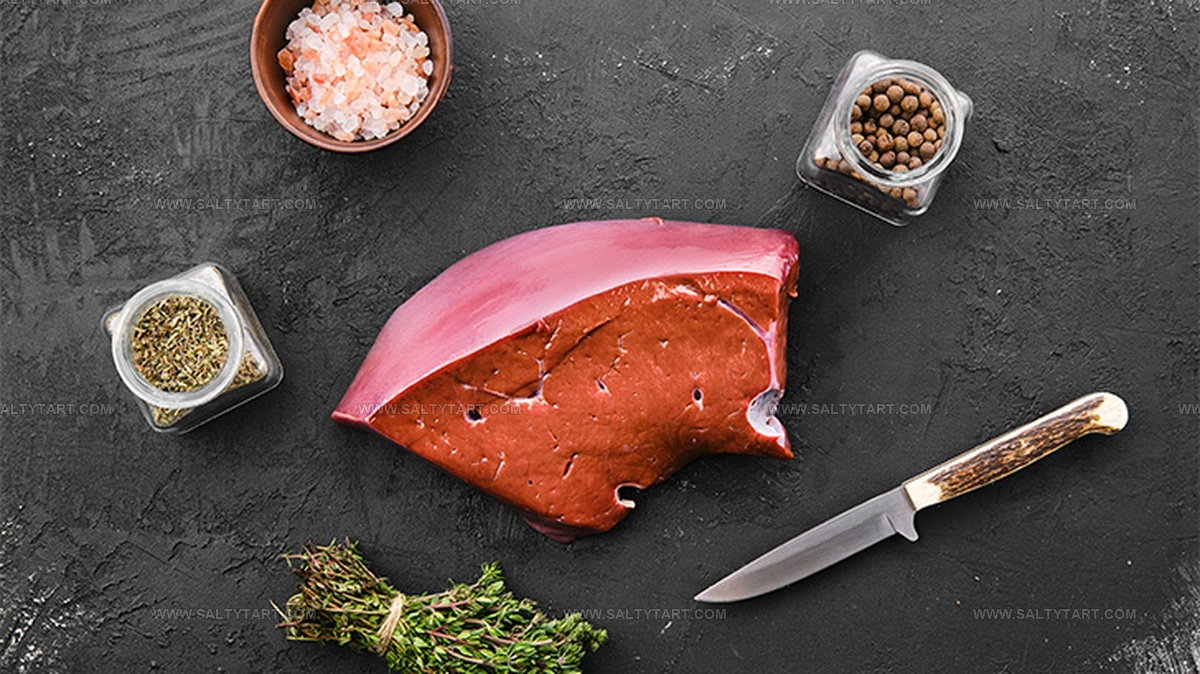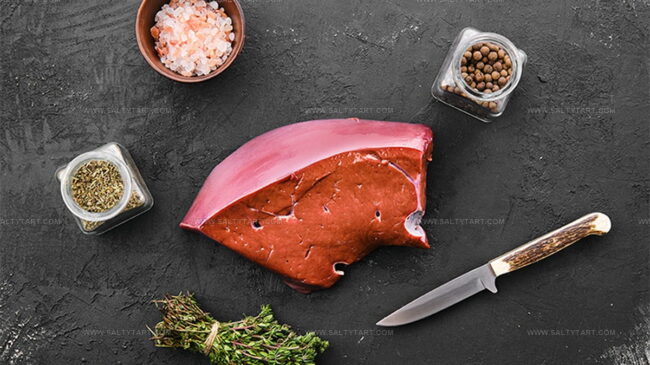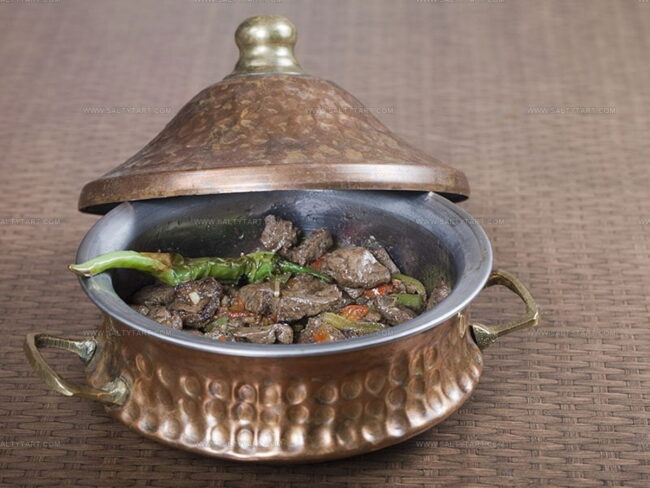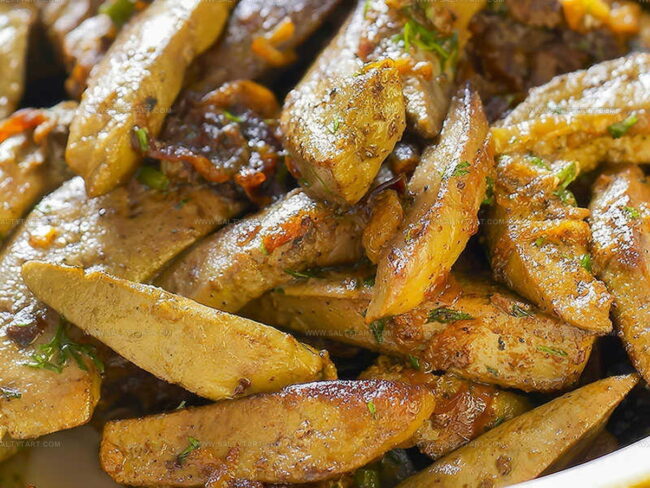What Does Beef Liver Taste Like? Find Out & Decide If It’s For You
Beef liver's unique flavor profile often sparks curiosity among food enthusiasts and nutrition-conscious individuals.
Many people approach this nutrient-dense organ meat with a mix of intrigue and hesitation.
Some have heard rumors about its distinct taste, while others wonder if they can actually enjoy consuming it.
Health-conscious eaters recognize liver as a powerhouse of essential vitamins and minerals, making its potential culinary experience even more intriguing.
Cooking methods and seasoning can dramatically transform its sensory characteristics, potentially making it more palatable for those skeptical about trying organ meats.
The key lies in understanding how different preparation techniques can influence its overall taste and texture.
Are you ready to unravel the mystery behind beef liver's distinctive culinary personality?
Beef Liver: Taste Overview
Liver brims with nutrients and minerals, with a taste that matches its richness.
Some say it has a strong, sharp flavor that feels metallic and earthy.
Some folks adore it, while others can't stand it.
Cooks often pair liver with onions, since their sweetness helps soften the meat's intense and weighty flavor.
Beef Liver: What Texture To Expect
Raw liver feels mushy and delicate, almost like gelatin.
When cooked just right to medium-rare, beef liver keeps its tenderness and gains a smooth richness that liver fans enjoy.
Cooking beef liver too long makes it turn tough and hard like rubber.
Beef Liver: How To Cook It
Washing liver carefully and removing membranes and arteries starts this classic meat preparation.
Soaking the meat in buttermilk helps soften its strong flavor and tenderize the texture.
Searing the liver with chopped onions in a hot pan brings out delicious, rich tastes.
Cooks can follow Dominican Cooking's detailed recipe for perfect results.
Why Soak Liver First?
Milk or buttermilk helps make liver taste better and soften its texture.
Soaking liver in these dairy products can also help clean out unwanted flavors or materials.
Ways To Make Beef Liver Taste Better
Milk works magic when preparing liver.
Soak the meat in milk for at least 30 minutes, or even better, let it sit overnight.
This simple step softens the strong flavor and makes the liver more enjoyable.
Cooking liver offers many possibilities.
Boiling, frying, sautéing, or baking each brings out different tastes.
Pairing liver with sauces, vegetables, rice, or pasta can change its overall flavor profile.
Seasoning makes a big difference in liver dishes.
Caramelized onions work wonderfully with liver's rich taste.
Herbs like oregano, sage, and rosemary add nice touches.
Bolder cooks might experiment with spices such as cinnamon, curry powder, and cumin for unexpected and delicious results.
Best Marinades and Spices for Beef Liver
Beef liver’s bold flavor can be mellowed and enhanced with the right marinades and spices, making it more appealing and delicious for all kinds of eaters:
Common Mistakes When Cooking Liver
Cooking liver can be rewarding, but a few common mistakes can lead to an unpleasant taste or texture if you’re not careful:
Beef Liver in Global Dishes
Beef liver is enjoyed around the world, with each region adding its own twist to make this nutritious ingredient both flavorful and inviting:
Liver Texture: Slicing and Cooking Tips
Liver has a unique texture that can be silky and tender when prepared well, and knowing how to slice and cook it makes all the difference:
Following these tips helps you get perfectly tender liver every time, making each bite smooth, flavorful, and easy to enjoy.
Does Beef Liver Resemble Chicken Liver?
Beef liver differs from chicken liver in many ways.
Beef liver carries a more robust, deep flavor that stands out much stronger than its chicken counterpart.
Hints of metal linger after each bite, which might not appeal to everyone.
Cooking methods can change how beef liver feels in your mouth - sometimes tough, sometimes smooth.
Chicken livers typically come with gentle seasoning and tend to feel more delicate compared to beef liver.
Someone familiar with chicken liver should prepare for a completely different taste and feel when sampling beef liver.
Is Beef Liver Considered A Delicacy?
Beef liver stands out as a tasty treat enjoyed by many worldwide.
Packed with important nutrients, this meat offers incredible health benefits.
Loaded with key vitamins and minerals like iron, phosphorus, vitamin A and B12, beef liver provides remarkable nutrition.
Health-conscious eaters often include this protein in their regular meals due to its powerful dietary advantages.
Can You Eat Cow Liver Raw?
Raw cow liver poses serious health risks.
Dangerous bacteria, parasites, and harmful pathogens like E. Coli, Salmonella, and Campylobacter can lurk inside the organ meat.
Liver might also hold toxic substances from animal environments, including heavy metals and chemicals absorbed through contaminated feed or water sources.
Eating raw cow liver dramatically increases chances of catching serious diseases such as hepatitis A or B, which could become life-threatening without proper medical treatment.
Simply put, avoid eating cow liver in its raw state.
Beef Liver: Popular Or Not?
Beef liver might catch you off guard with its unique flavor.
Compared to mild chicken breast, this organ meat stands out with its strong, intense taste.
Hints of metal and bitterness can feel overwhelming for first-time eaters.
Careful preparation helps improve the overall experience.
Washing the liver thoroughly and soaking it in milk can soften its sharp edges.
Watching the cooking process closely matters most.
Gentle handling makes all the difference in creating a more enjoyable meal.





Mike Reynolds
Founder & Recipe Developer
Expertise
Farm-to-table cuisine, Seasonal recipe development, Sustainable cooking techniques, Food photography
Education
Asheville-Buncombe Technical Community College (A-B Tech)
Associate Degree in Culinary Arts
Mike studied culinary arts with a strong focus on farm-to-table principles and sustainable cooking. His training emphasized the importance of fresh, local ingredients and environmentally responsible practices in the kitchen.
Mike’s food journey began deep in the Blue Ridge Mountains, where weekends at farmers’ markets and home-cooked meals sparked a lifelong obsession with simple, seasonal eating.
After earning his Associate Degree in Culinary Arts from Asheville-Buncombe Technical Community College, he set out to bring farm-to-table cooking into everyday kitchens, without the fuss.
Mike’s philosophy is all about keeping it fresh, unfussy, and full of heart. When he’s not crafting new single-serving recipes, he’s hiking mountain trails, chatting with local farmers, or experimenting with wild ingredients in his backyard kitchen.